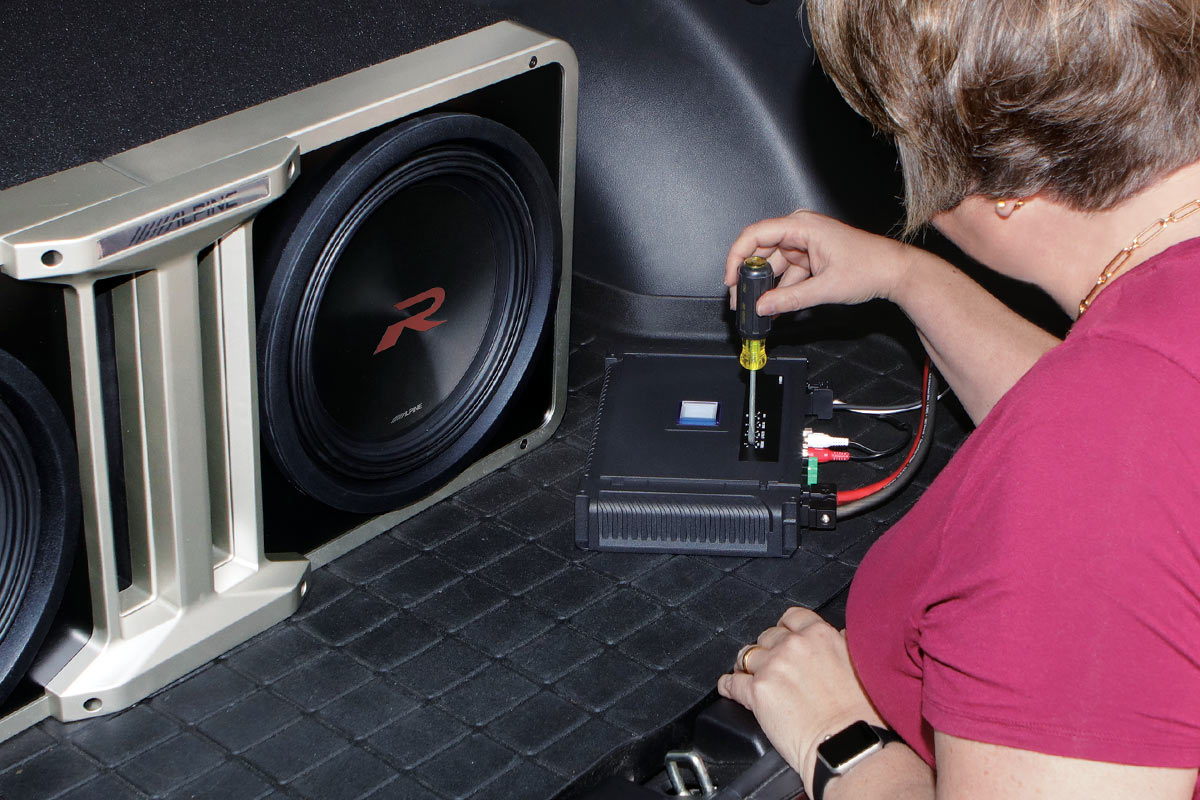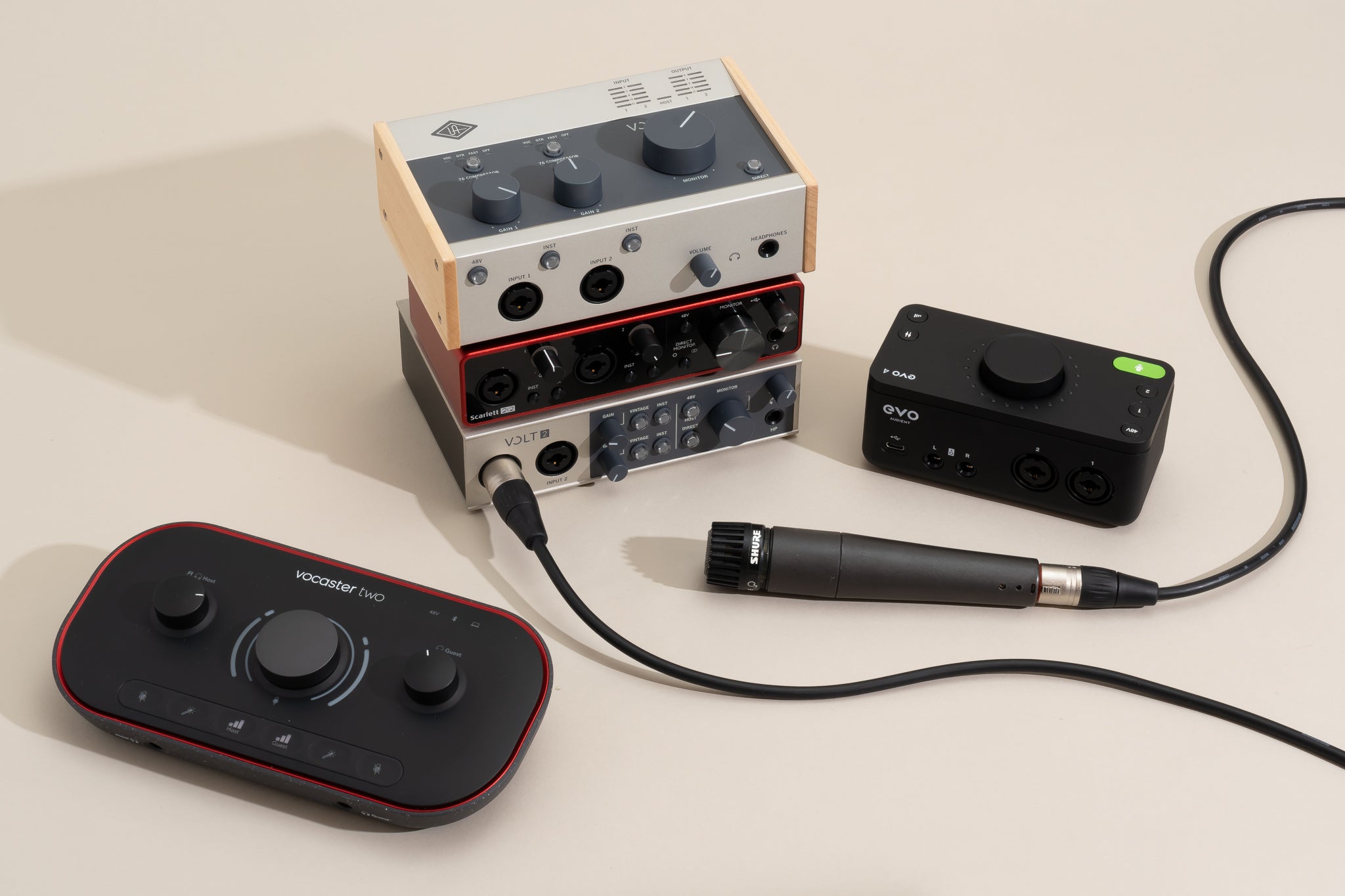Home>Production & Technology>Acoustic>How To Make Acoustic Guitar Louder


Acoustic
How To Make Acoustic Guitar Louder
Published: March 11, 2024
Learn how to make your acoustic guitar louder with these effective techniques and tips. Enhance your acoustic playing and sound quality today!
(Many of the links in this article redirect to a specific reviewed product. Your purchase of these products through affiliate links helps to generate commission for AudioLover.com, at no extra cost. Learn more)
Table of Contents
Introduction
When it comes to playing the acoustic guitar, achieving a louder and more resonant sound can greatly enhance the overall playing experience. Whether you're a seasoned musician or just starting out, understanding how to make your acoustic guitar louder can significantly impact the quality of your performances. From selecting the right guitar to mastering playing techniques, there are various factors to consider in order to optimize the volume and projection of your instrument.
In this comprehensive guide, we will explore a range of techniques and strategies to help you maximize the volume and clarity of your acoustic guitar. By delving into the intricacies of guitar selection, string maintenance, playing techniques, and the use of additional accessories, you will gain valuable insights into the art of producing a robust and resonant sound from your acoustic guitar.
As we delve into the various methods for enhancing the volume of your acoustic guitar, it's important to note that each approach contributes to a holistic understanding of the instrument. From the physical attributes of the guitar itself to the nuanced techniques employed during playing, every aspect plays a crucial role in determining the overall volume and projection of the sound.
By the end of this guide, you will have a comprehensive understanding of the different elements that contribute to the volume of an acoustic guitar, allowing you to make informed decisions and adjustments to achieve the desired level of loudness and clarity. Whether you're performing on stage, recording in a studio, or simply strumming at home, the knowledge and techniques presented here will empower you to unlock the full potential of your acoustic guitar's sound.
Choosing the Right Guitar
Selecting the right acoustic guitar is the foundational step in optimizing its volume and projection. The body shape, tonewoods, and overall construction significantly influence the instrument's sound output. When aiming for a louder acoustic guitar, several key factors should be considered during the selection process:
-
Body Shape: The body shape of an acoustic guitar plays a pivotal role in determining its volume and tonal characteristics. Larger body shapes, such as dreadnought or jumbo, tend to produce a more robust and resonant sound due to their increased internal air volume. These guitars are well-suited for generating a louder acoustic output, making them ideal for performances in larger venues or settings where projection is crucial. Conversely, smaller body shapes, like concert or parlor guitars, may produce a more intimate and nuanced sound, which could be suitable for smaller, more intimate settings.
-
Tonewoods: The choice of tonewoods used in the construction of an acoustic guitar significantly impacts its overall sound quality and volume. Tonewoods such as spruce, cedar, and mahogany are known for their ability to enhance projection and volume. Spruce, in particular, is highly regarded for its ability to deliver a bright and resonant sound, making it a popular choice for achieving a louder acoustic guitar. When selecting a guitar, consider the tonewood combinations used in its construction to ensure that they align with your volume preferences.
-
Construction Quality: The overall construction quality of the guitar, including the bracing pattern and craftsmanship, can greatly influence its volume and projection. Well-constructed guitars with sturdy bracing and precise assembly are more likely to produce a louder and more resonant sound. When evaluating potential guitars, pay close attention to the build quality and structural integrity to ensure that it aligns with your volume requirements.
-
Playability: While not directly related to the acoustic output, the playability of the guitar can indirectly impact its volume. A guitar that is comfortable to play and allows for effortless technique execution can enable the player to produce a more powerful and consistent sound. Therefore, when choosing an acoustic guitar, consider factors such as neck profile, string action, and overall ergonomics to ensure that the instrument facilitates optimal playing dynamics.
By carefully considering these factors and selecting an acoustic guitar that aligns with your volume preferences, you can lay a solid foundation for achieving a louder and more resonant sound. The right guitar, tailored to your playing style and sonic preferences, can serve as a powerful tool for maximizing the acoustic output and enhancing your overall musical experience.
Changing the Strings
Changing the strings of an acoustic guitar is a fundamental yet often overlooked aspect of maintaining and optimizing its volume and projection. Over time, strings can become worn, lose their tonal clarity, and inhibit the instrument's ability to produce a robust sound. By regularly changing the strings and selecting the appropriate type, gauge, and material, guitarists can significantly enhance the volume and resonance of their acoustic guitars.
When it comes to selecting strings for a louder acoustic guitar, several key considerations come into play:
-
String Gauge: The gauge of the strings directly impacts the tension and overall volume of the acoustic guitar. Lighter gauge strings exert less tension on the guitar's neck and bridge, allowing for easier playability and potentially greater resonance. On the other hand, heavier gauge strings can produce a fuller and louder sound due to the increased tension and mass. Experimenting with different string gauges can help guitarists find the optimal balance between playability and volume.
-
String Material: The material composition of the strings, such as phosphor bronze, 80/20 bronze, or silk and steel, can significantly influence the acoustic output. Phosphor bronze strings are known for their bright and articulate sound, making them a popular choice for enhancing volume and projection. 80/20 bronze strings, on the other hand, offer a crisper and more resonant tone, which can contribute to a louder acoustic sound. Silk and steel strings provide a mellower and softer sound, which may be suitable for achieving a balanced and nuanced volume.
-
Regular Maintenance: In addition to selecting the right strings, maintaining a regular restringing schedule is essential for preserving the acoustic guitar's volume and tonal clarity. As strings age, they accumulate dirt, sweat, and grime, which can dampen their vibrational properties and hinder the instrument's ability to resonate effectively. By changing the strings at regular intervals and keeping them clean, guitarists can ensure that their acoustic guitars consistently deliver a powerful and vibrant sound.
By paying close attention to the gauge, material, and maintenance of the strings, guitarists can effectively optimize the volume and projection of their acoustic guitars. Whether aiming for a brighter and more resonant sound or seeking a balanced and nuanced volume, the choice of strings and their upkeep play a crucial role in shaping the acoustic guitar's sonic characteristics. Through thoughtful selection and regular maintenance, guitarists can harness the full potential of their instruments, unlocking a richer and more expressive acoustic sound.
Adjusting the Action
Adjusting the action of an acoustic guitar is a critical step in optimizing its playability, tone, and volume. The action refers to the height of the strings above the fretboard, and it directly influences the instrument's responsiveness and sonic characteristics. By carefully adjusting the action, guitarists can tailor the playability and volume of their acoustic guitars to suit their preferences and playing style.
When it comes to enhancing the volume of an acoustic guitar through action adjustment, several key considerations come into play:
-
String Height: The action of an acoustic guitar significantly impacts the string height, which, in turn, affects the ease of play and the instrument's volume. Lowering the action can reduce the distance between the strings and the fretboard, allowing for easier fretting and potentially enhancing the guitar's volume. However, excessively low action may lead to fret buzz and compromise the overall sound quality. Conversely, raising the action can increase string tension and projection, contributing to a louder and more resonant acoustic output.
-
Truss Rod Adjustment: The truss rod, located within the guitar's neck, plays a crucial role in maintaining the instrument's structural integrity and neck relief. By making precise adjustments to the truss rod, guitarists can fine-tune the curvature of the neck, thereby influencing the action and playability of the acoustic guitar. A well-adjusted truss rod ensures optimal string clearance and neck alignment, which can directly impact the instrument's volume and tonal clarity.
-
Saddle Height: The saddle, located on the bridge of the acoustic guitar, directly affects the action and string height. By carefully adjusting the saddle height, guitarists can customize the action to achieve the desired balance between playability and volume. Lowering the saddle can reduce string tension and facilitate a more effortless playing experience, potentially contributing to a louder and more resonant sound. Conversely, raising the saddle height can increase string tension and projection, enhancing the acoustic guitar's volume and sonic presence.
By meticulously adjusting the action, truss rod, and saddle height of an acoustic guitar, guitarists can fine-tune the instrument's playability and volume to align with their musical goals. Whether seeking a more responsive and dynamic playing experience or aiming to maximize the acoustic output, the thoughtful adjustment of the action can significantly impact the overall performance and sonic characteristics of the acoustic guitar.
Using a Pick
Utilizing a pick, also known as a plectrum, can profoundly impact the volume and tonal characteristics of an acoustic guitar. The choice of pick material, thickness, and playing technique all contribute to the instrument's overall sound projection and resonance. When aiming to make an acoustic guitar louder, the strategic use of a pick can significantly enhance the instrument's sonic presence and dynamic range.
Pick Material and Thickness
The material and thickness of the pick play a crucial role in shaping the acoustic guitar's volume and tonal clarity. Picks are available in various materials, including plastic, nylon, celluloid, and even metal. Each material offers distinct tonal properties and impact on the guitar's volume. For instance, a thicker pick made of materials such as ultem or Delrin can produce a more pronounced and forceful attack, leading to a louder and more assertive sound. Conversely, thinner picks may offer a softer and more delicate tonal response, which can be advantageous for achieving nuanced dynamics and tonal variation.
Playing Technique
In addition to pick material and thickness, the playing technique employed with the pick significantly influences the acoustic guitar's volume and projection. The angle of attack, the force applied, and the precision of the picking motion all contribute to the instrument's sonic output. By adjusting the picking technique, guitarists can modulate the volume and tonal characteristics, allowing for greater control over the acoustic sound. Experimenting with different picking styles, such as alternate picking, hybrid picking, or aggressive strumming, can unveil the full potential of the acoustic guitar's volume and projection.
Amplifying the Sound
When using a pick, the acoustic guitar's sound can be further amplified through strategic placement and angle of the pick against the strings. By striking the strings with precision and intention, guitarists can elicit a more resonant and powerful sound, maximizing the instrument's volume and sonic impact. Additionally, varying the pick angle and attack position can yield diverse tonal textures and volume dynamics, enabling the guitarist to tailor the acoustic sound to suit different musical contexts and performance settings.
Incorporating a pick into the playing technique offers a versatile and effective means of enhancing the acoustic guitar's volume and projection. By carefully selecting the pick material, refining the playing technique, and exploring the sonic possibilities, guitarists can unlock the full potential of their acoustic instruments, achieving a louder, more resonant, and dynamically expressive sound.
Playing Technique
The playing technique employed when using a pick significantly influences the volume, tonal characteristics, and overall sonic expression of an acoustic guitar. The manner in which a guitarist wields the pick, the angle of attack, and the force applied all contribute to the instrument's sonic output. By mastering and refining the playing technique, guitarists can unlock the full potential of their acoustic guitars, harnessing a diverse range of tonal textures, dynamic nuances, and volume dynamics.
One of the fundamental aspects of playing technique is the angle of attack. The angle at which the pick strikes the strings directly impacts the acoustic guitar's volume and tonal clarity. A more aggressive and assertive angle of attack can elicit a powerful and resonant sound, enhancing the instrument's projection and sonic presence. Conversely, a gentler angle of attack may yield a softer and more delicate tonal response, ideal for achieving nuanced dynamics and expressive subtleties. By consciously manipulating the angle of attack, guitarists can sculpt the acoustic sound to suit a wide array of musical styles and performance contexts.
Furthermore, the force applied during picking plays a pivotal role in shaping the acoustic guitar's volume and tonal characteristics. A more forceful and deliberate picking motion can yield a robust and assertive sound, ideal for commanding attention and delivering impactful musical passages. Conversely, a lighter touch can produce a more delicate and ethereal tonal quality, allowing for gentle and emotive musical expressions. By modulating the force applied during picking, guitarists can navigate a spectrum of volume dynamics, from intimate whispers to commanding crescendos, enriching the acoustic sound with expressive depth and emotional resonance.
Precision in the picking technique is another crucial element that influences the acoustic guitar's volume and sonic impact. The accuracy and consistency of the picking motion directly contribute to the instrument's overall sound projection and tonal clarity. By honing their precision and control, guitarists can unleash the full potential of their acoustic guitars, delivering articulate and resonant performances that captivate audiences and convey musical narratives with clarity and conviction.
In essence, the playing technique employed when using a pick is a multifaceted and dynamic aspect of acoustic guitar performance. By mastering the angle of attack, modulating the force applied, and refining precision, guitarists can harness the instrument's full sonic potential, achieving a diverse range of tonal textures, expressive dynamics, and captivating volume dynamics. Through dedicated practice and exploration, guitarists can elevate their acoustic performances, unlocking a world of sonic possibilities and musical expression.
Using a Soundhole Cover
Introducing a soundhole cover to your acoustic guitar setup can significantly impact its volume and resonance. This simple yet effective accessory offers a range of benefits that contribute to enhancing the instrument's sonic characteristics and overall performance.
One of the primary advantages of using a soundhole cover is its ability to minimize feedback during live performances and amplified settings. By placing a soundhole cover over the soundhole of the acoustic guitar, unwanted feedback and resonance caused by external sound sources, such as stage monitors or PA systems, can be effectively mitigated. This allows for greater control over the instrument's volume and sonic clarity, enabling the guitarist to deliver a more focused and articulate performance, particularly in high-volume or amplified environments.
Additionally, a soundhole cover can influence the acoustic guitar's tonal characteristics, contributing to a more balanced and resonant sound. By partially obstructing the soundhole, the cover alters the instrument's internal air resonance, resulting in a tonal profile that may exhibit enhanced warmth, depth, and sustain. This can be particularly advantageous for achieving a fuller and more robust acoustic sound, especially in settings where projection and tonal richness are paramount.
Furthermore, a soundhole cover can serve as a tool for modifying the acoustic guitar's volume dynamics and tonal response. By experimenting with different types of soundhole covers, such as those constructed from materials like rubber, silicone, or wood, guitarists can tailor the instrument's sonic characteristics to suit their preferences. Some soundhole covers feature perforations or adjustable vents, allowing for precise control over the instrument's volume and resonance, empowering the guitarist to fine-tune the acoustic sound to align with diverse musical contexts and performance requirements.
In essence, incorporating a soundhole cover into the acoustic guitar setup offers a versatile and effective means of optimizing the instrument's volume, tonal balance, and feedback resistance. Whether performing on stage, recording in a studio, or practicing at home, the strategic use of a soundhole cover can significantly enhance the acoustic guitar's sonic capabilities, providing greater control over volume dynamics, tonal richness, and feedback management.
Using a Preamp or Pickup System
In the quest to amplify the volume and sonic capabilities of an acoustic guitar, the utilization of a preamp or pickup system stands as a pivotal and transformative approach. By integrating these technologies into the acoustic guitar setup, musicians can unlock a realm of sonic possibilities, enabling enhanced volume, tonal clarity, and dynamic expression.
A preamp serves as a fundamental component in the amplification chain, offering essential tonal shaping and signal optimization capabilities. When paired with a pickup system, whether it be an undersaddle transducer, soundboard transducer, or magnetic pickup, the preamp acts as a conduit for translating the acoustic guitar's natural resonance into a powerful and articulate amplified sound.
One of the primary advantages of using a preamp or pickup system is the ability to capture the nuances of the acoustic guitar's sound and project it with clarity and authority. The pickup system, through its transducer or magnetic elements, converts the mechanical vibrations of the guitar's strings and body into electrical signals, which are then refined and optimized by the preamp. This process ensures that the instrument's acoustic characteristics, including its volume, tonal richness, and dynamic range, are faithfully reproduced in amplified form, allowing for a seamless transition from intimate acoustic performances to expansive, sonically immersive presentations.
Furthermore, the integration of a preamp or pickup system empowers guitarists to exert precise control over the instrument's volume dynamics and tonal characteristics. Many preamp systems feature onboard equalization (EQ) controls, allowing for tailored adjustments to the bass, midrange, and treble frequencies. This level of tonal shaping enables guitarists to sculpt the amplified sound to suit diverse musical styles and performance environments, ensuring that the acoustic guitar's sonic profile remains vibrant, balanced, and well-suited for a range of musical contexts.
In addition to tonal shaping, preamp systems often incorporate features such as feedback suppression, phase inversion, and onboard tuners, further enhancing the acoustic guitar's amplified performance. These functionalities contribute to a more seamless and professional live sound experience, mitigating potential feedback issues, optimizing signal integrity, and ensuring that the instrument remains in tune and ready for performance.
In essence, the integration of a preamp or pickup system represents a transformative step in maximizing the volume and sonic potential of an acoustic guitar. By harnessing the capabilities of these technologies, guitarists can elevate their amplified performances, delivering a compelling and resonant sound that captures the essence of the acoustic instrument while offering enhanced volume, tonal versatility, and performance reliability.
Conclusion
In the realm of acoustic guitar performance, the pursuit of achieving a louder and more resonant sound is a journey marked by exploration, refinement, and a deep understanding of the instrument's sonic intricacies. Throughout this comprehensive guide, we have delved into a myriad of techniques, strategies, and considerations aimed at optimizing the volume and projection of the acoustic guitar. From the foundational aspects of guitar selection to the nuanced intricacies of playing technique and technology integration, each facet contributes to a holistic approach to unlocking the instrument's full sonic potential.
The journey begins with the selection of the right acoustic guitar, where considerations such as body shape, tonewoods, and construction quality lay the groundwork for achieving a louder and more resonant sound. The meticulous choice of strings, including gauge, material, and regular maintenance, emerges as a fundamental element in shaping the acoustic guitar's volume and tonal clarity. Furthermore, the adjustment of the action, the strategic use of a pick, and the incorporation of accessories such as soundhole covers all play pivotal roles in sculpting the instrument's sonic characteristics, offering greater control over volume dynamics, tonal balance, and feedback management.
As we delve into the realm of technology, the integration of preamp and pickup systems emerges as a transformative approach to amplifying the acoustic guitar's volume and sonic capabilities. By harnessing the capabilities of these technologies, guitarists can unlock a realm of sonic possibilities, enabling enhanced volume, tonal clarity, and dynamic expression, both in live performance and studio settings.
In conclusion, the pursuit of making an acoustic guitar louder transcends mere volume enhancement; it embodies a quest for sonic expression, tonal richness, and dynamic versatility. By embracing the multifaceted approaches and techniques explored in this guide, guitarists can embark on a journey of sonic exploration, unlocking the full potential of their acoustic instruments and delivering performances that resonate with clarity, authority, and emotive depth. Whether on stage, in the studio, or within the intimate confines of personal practice, the knowledge and techniques presented here serve as a compass for navigating the boundless sonic landscape of the acoustic guitar, empowering musicians to craft performances that captivate, inspire, and resound with the timeless allure of acoustic music.











